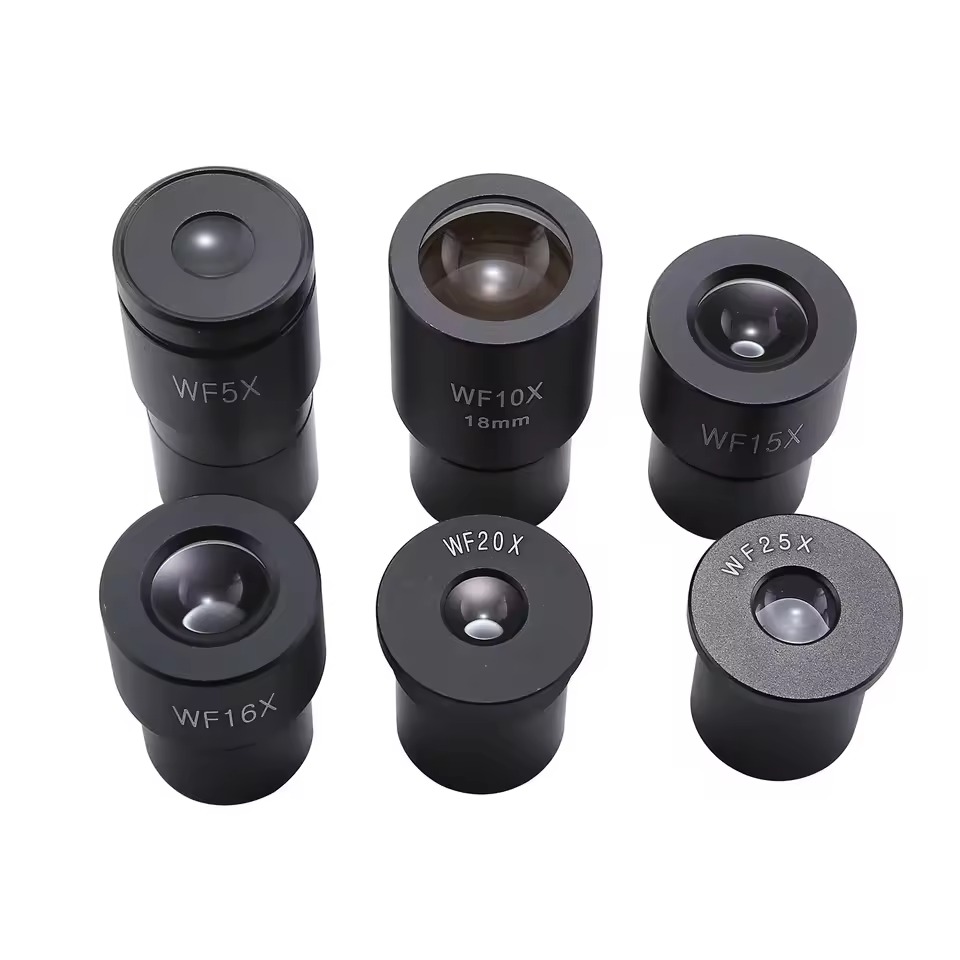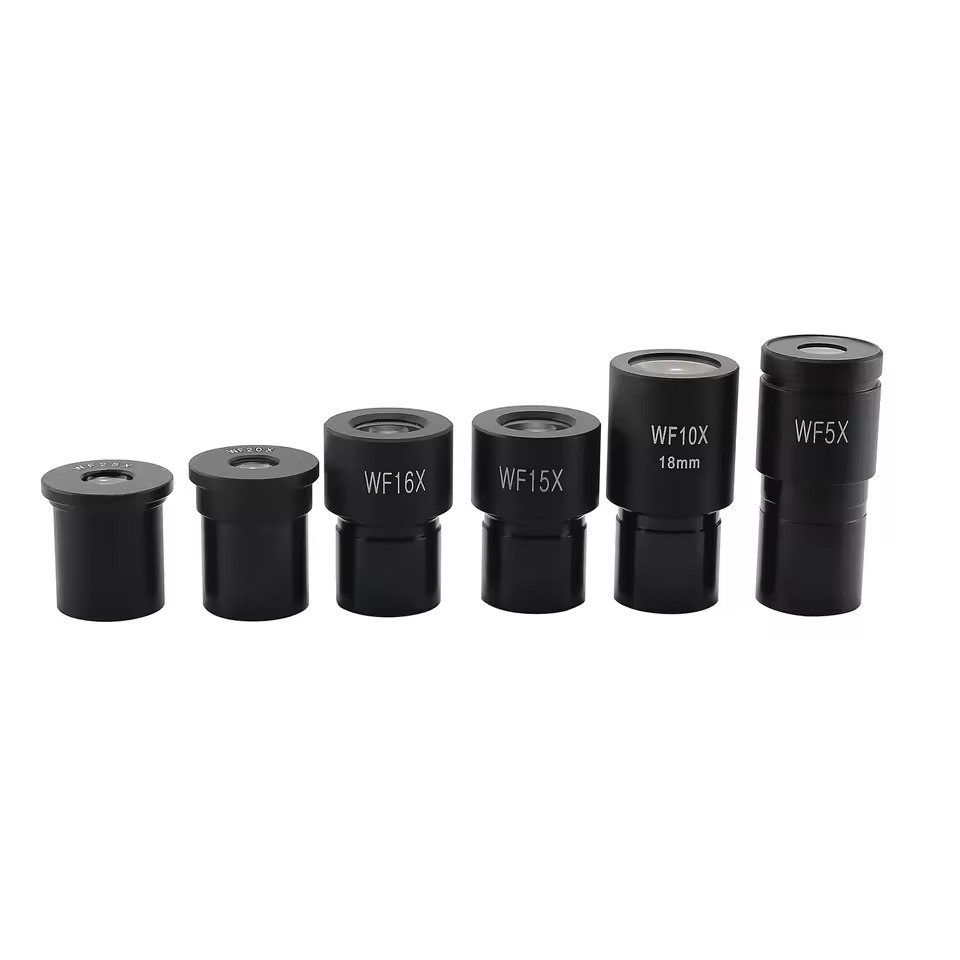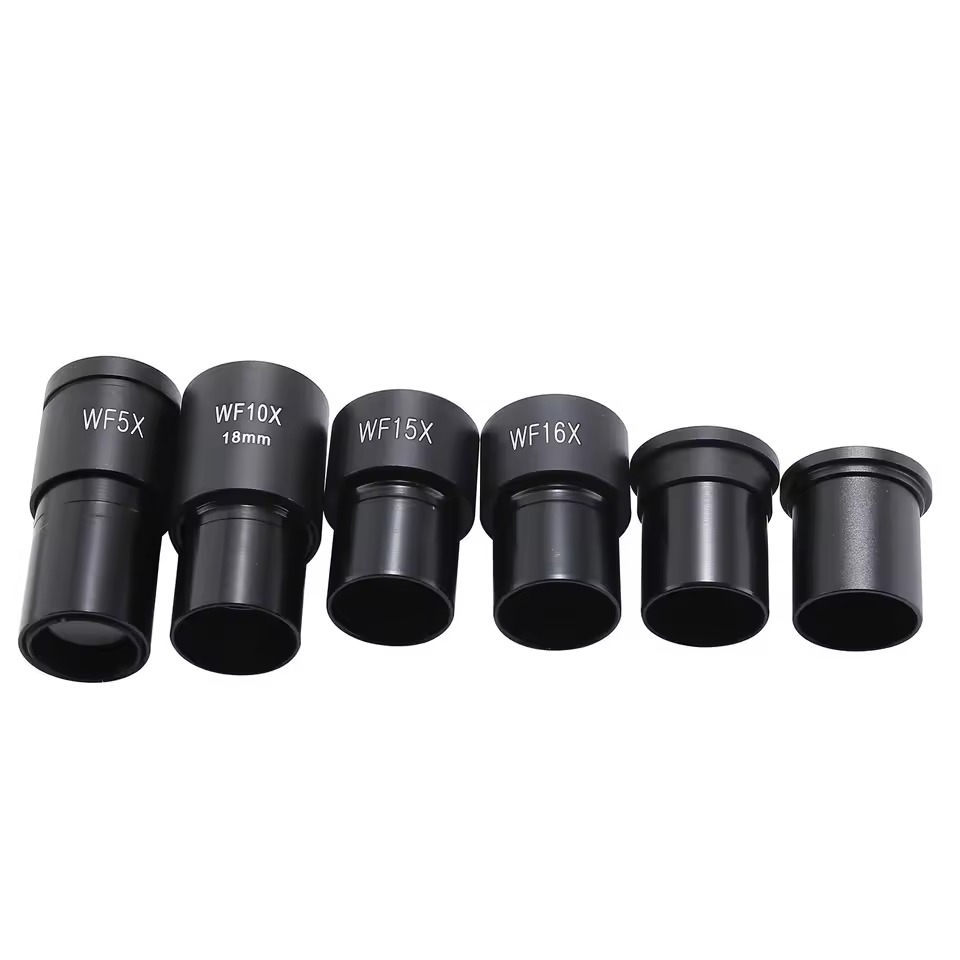Introduction to Ocular Lens Microscopes
An ocular lens microscope is a vital tool in viewing tiny objects. It magnifies the subject to make it easy for the eye to see. This type of microscope uses ocular lenses, also known as eyepieces, to achieve this. The power of an ocular lens microscope lies in its ability to enhance details. Scientists and researchers rely on it for accurate observations.
Ocular lenses come in various magnifications. Each lens provides a different level of detail. People use ocular lens microscopes in labs, schools, and even in field research. They are essential in biology, chemistry, and material science. Understanding how ocular lens microscopes work can improve your research results.
To use an ocular lens microscope effectively, you need to know about its key parts. These include the eyepiece, objective lenses, and the stage. Light sources and focus knobs are also important. Each part plays a role in how the microscope functions. For example, the eyepiece is where you look in to see the magnified image.
Choosing the right ocular lens microscope can seem daunting. But knowing about the different types helps. Some microscopes are better for certain tasks than others. This introduction will guide you through the key components and their functions. It will also cover the latest technology improvements in ocular lens design.

Key Components and Functionality
Understanding the key components and functionality of an ocular lens microscope is essential.
The Role of Ocular Lenses in Microscopy
Ocular lenses, or eyepieces, are crucial in microscopy. They magnify the image of the sample that objective lenses focus. This dual magnification process allows for detailed examination. Users peer through ocular lenses to observe the magnified image. Their design determines the overall magnification and field of view. In essence, ocular lenses are the bridge between the microscope’s optics and the viewer’s eye.
Types of Ocular Lenses Used in Microscopes
Microscopes come with various ocular lenses, each suited to different tasks. Single-lens eyepieces are simple and cost-effective. They are common in basic educational microscopes. Compound eyepieces involve multiple lens elements. They enhance image quality and reduce optical aberrations. Wide-field lenses offer a larger viewing area. They are helpful for scanning large samples quickly. High-eyepoint lenses cater to users with glasses. They allow comfortable viewing distance without compromising the image. Zoom eyepieces adjust magnification without changing lenses. This feature is handy for detailed analysis across different scales.
Technological Advancements in Ocular Lens Design
Ocular lens microscopes continue to undergo significant changes. Experts are making strides in enhancing their features. New materials and design methods are in play. These advancements lead to more powerful and precise instruments. They expand the capabilities of ocular lens microscopes.
Enhancements in Optical Resolution
Recent developments have boosted the optical resolution of ocular lenses. The use of advanced coatings reduces reflections and increases clarity. Manufacturers are creating lenses that capture finer details. This is crucial for tasks requiring high accuracy, such as cellular research. The improved resolution allows for clearer images at higher magnifications.
High-tech glass and precision engineering create better focus. This brings objects into sharper relief. It helps in revealing structures that were once too small to see. With better resolution, scientists can push the boundaries of their research.
Improvements in Ergonomics and Usability
Design improvements also focus on the user experience. Modern ocular lens microscopes are more ergonomic. They decrease strain during long hours of use. Features like adjustable eyepieces cater to individual needs. This makes the microscopes more accessible to a diverse range of users.
User-friendly interfaces and controls are becoming standard. They simplify the process of adjusting settings. Digital enhancements allow for easy sharing and analysis of images. Connectivity options make it easier to integrate microscopes into various workflows.
Today’s ocular lens microscopes combine comfort with functionality. They are designing tools that conform to natural movements and postures. This shift in design philosophy aims to increase productivity while reducing fatigue.
Applications of Ocular Lens Microscopes in Various Fields
Ocular lens microscopes serve crucial roles beyond the lab bench. Their precise magnification touches many disciplines.
Medical Research and Pathology
In the medical field, ocular lens microscopes are indispensable. They aid in diagnosing diseases by enabling the study of cells and tissues. Pathologists rely on these instruments to spot abnormalities in biopsies. The clear images produced assist in identifying cancerous cells and other disorders. This detailed analysis drives treatment decisions and patient outcomes. Ocular microscopes also support research into the causes and progression of diseases.
Material Science and Engineering
Engineers and scientists utilize ocular lens microscopes in material science. These tools help examine metals, polymers, and composites. Understanding material properties at a microscopic level leads to stronger, more durable products. Microscopes reveal stress fractures, corrosion, and wear patterns. This knowledge is vital in developing new materials. It also ensures quality control in manufacturing processes. In essence, ocular lens microscopes are key to innovation and safety in engineering fields.

Choosing the Right Ocular Lens Microscope
Selecting the right ocular lens microscope is key to your research success. The vast range of microscopes can make this decision challenging. Factors such as magnification, resolution, and ergonomics play a crucial role. Your choice will impact the quality and efficiency of your analysis. Overlook these aspects, and you might end up with a tool ill-suited to your needs.
Factors to Consider When Selecting an Ocular Lens
When browsing ocular lens microscopes, assess several factors. The magnification needs come first. Think about the detail level you require. Next, examine the optical resolution. A higher resolution will render clearer images. Consider the ergonomics too. Look for features that make the microscope comfortable to use for long periods.
Ensure the ocular lens is compatible with your work. Wide-field lenses could be best for quick scanning of large samples. High-eyepoint lenses suit users with glasses well. For diverse magnification needs, choose zoom eyepieces. They allow for adjusting without changing lenses. Lastly, consider your budget. Higher-end models offer more features but at a greater cost.
Comparison of Popular Ocular Lens Microscope Brands
Several reputable brands offer quality ocular lens microscopes. Certain brands specialize in high-resolution lenses, while others focus on user comfort. Brands like Zeiss, Nikon, and Olympus are well-known. They lead the market with their high-quality optics and ergonomic designs. Leica microscopes also offer exceptional image clarity and are favored in research.
Each brand brings something different to the table. Compare their offerings with your requirements. Read reviews and ask for recommendations from peers. Often, the practical experience of other users can guide you to the most fitting choice.
Care and Maintenance of Ocular Lens Microscopes
Proper care and upkeep are vital for maintaining your ocular lens microscope. It ensures long-term performance and precision. Here are essential tips you should follow:
- Always Handle with Care: Treat your microscope with respect. Avoid rough handling to prevent damage to delicate parts.
- Regular Cleaning: Keep ocular lenses and objective lenses clean. Use lens paper or a soft cloth designed for optical surfaces.
- Avoid Moisture and Dust: Store your microscope in a dry, dust-free environment. Moisture and dust can harm the lenses and mechanical components.
- Check for Alignment: Ensure that the lenses are properly aligned. Misalignment can cause poor image quality and eye strain.
- Lubricate Moving Parts: Apply appropriate lubricants to gears and moving parts. This will maintain smooth operation.
- Handle Eyepieces with Care: When removing or inserting eyepieces, be gentle. They are integral for image magnification and clarity.
- Regular Servicing: Have your microscope serviced by a professional regularly. This can help catch issues before they become major problems.
By adhering to these maintenance guidelines, your ocular lens microscope will remain a reliable tool for any magnification task. An ounce of prevention in maintenance equals a microscope that stands the test of time.

Future Directions in Ocular Lens Microscope Technology
As we peer into the future of ocular lens microscope technology, exciting innovations await. Continuous improvements in optical sciences and digital tech promise to advance microscopy further. These developments are not just enhancements of existing features. They are groundbreaking changes that could redefine how we use microscopes.
Innovations on the Horizon
In the realm of ocular lens microscopes, several innovations stand out. First, there’s the integration of computational imaging. This tech uses algorithms to enhance images beyond the hardware’s limits. Next, we expect to see more widespread use of 3D imaging. It will allow for more detailed structural analysis. Then, there’s the rise of portable, high-resolution microscopes. These tools will take research out of traditional labs and into the field.
Smart microscopes with AI capabilities are also on the horizon. They’ll automatically adjust settings for optimal imaging. Moreover, wireless connectivity is becoming standard. It will enable easier data sharing and collaboration across the globe.
Looking to the future, researchers will likely work with even more user-friendly systems. These new designs will streamline complex processes, making research more efficient. Continuous innovation in ocular lens microscopes is a journey, not a destination. It’s about pushing the boundaries of what’s possible in microscopy.
